|
BACKGROUND
Today we will look at the history of the rapture theory.
The
full background to this teaching is available online at this link
NO BACKGROUND PROVIDED
|
Online links to scriptures (New International Version [NIV] unless otherwise stated) are shown in blue
| HISTORY OF RAPTURE THEORY |
|
 There is a lot written about the origin and history of rapture theory. ‘The Rapture’ is an appealing concept for Christians as it removes believers from the generally accepted, likely 7 year ‘Tribulation’ that will pervade the world and the church prior to the return of Jesus. From here there is little agreement, and the church has been wracked with division on the form it will take, including a rapture or not, and when it will occur.
Naturally, in justification for the rapture, scholarship from the time of Jesus has been searched and researched looking for its source. Most of the connections found are tenuous at the very least!
Rather than give you my views directly, I am going to quote from a article, The Rapture Theory: It's Surprising Origin by Ernest L. Martin, Ph.D., 1976, where the subject has been thoroughly researched.
|
|
|
 It may come as a surprise to many Christians, but the doctrine of the Rapture is not mentioned in any Christian writings, of which we have
knowledge, until after the year 1830 A.D. Whether the early writers were Greek or Latin, Armenian or Coptic, Syrian or Ethiopian, English or German, orthodox or heretic, no one mentioned a syllable about it. Of course, those who feel the origin of the teaching is in the Bible would say that it only ceased being taught (for some unknown reason) at the close of the apostolic age only to reappear in 1830 A.D. But if the doctrine were so clearly stated in Scripture, it seems incredible that no one should have referred to it before the 19th century. This does not necessarily show that the teaching is wrong, but it does mean that thousands of eminent scholars who lived over a span of seventeen centuries (including some of the most astute of the "Christian Fathers" and those of the Reformation and post-Reformation periods) must be considered as prophetic dunces for not having understood so fundamental a teaching. We are not denigrating the doctrine in mentioning these historical facts. That is not our intention. But we do feel that the Foundation should show the historical problems associated with the teaching. This lapse of seventeen centuries when no one mentioned anything about it must be a serious obstacle to its reliability.
|
|
|
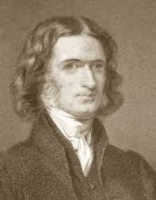 Its Beginning
The result of a careful investigation into the origin of the Rapture has been recently published. The book is an excellent one which deserves to be read by all people interested in the subject. Its title: "The Unbelievable Pre-Trib Origin" by Dave MacPherson. He catalogs a great deal of historical material which answers the doctrine's mysterious derivation. We wish to review the results of his research. In the middle 1820's a religious environment began to be established among a few Christians in London. England which proved to be the catalyst around which the doctrine of the Rapture emerged. Expectations of the soon coming of our Lord were being voiced, This was no new thing, but what, was unusual was the teaching by a Presbyterian minister named Edward Irving that there had to be a restoration of the spiritual gifts mentioned in I Corinthians 12-14 just before Christ's second coming. To Irving, the time had come for those spiritual manifestations to occur. Among the expected gifts was the renewal of speaking in tongues and of spirit-motivated prophetic utterances. Irving began to propagate his beliefs. His oratorical skills and enthusiasm caused his congregation in London to grow. Then a number of people began to experience the "gifts." Once this happened opposition from the organized churches set in. It resulted in Irving's dismissal from the Presbyterian church in 1832. His group then established themselves as the Catholic Apostolic Church and continued the teachings of Irving.
These events were the beginnings of what some call present day Pentecostalism. Indeed Irving has been called by some church historians "the father of modern Pentecostalism." What does all this have to do with the origin of the Rapture doctrine? Very much indeed. Let us look at what happened in the year 1830 -- two years before Irving's dismissal from the Presbyterian church. In that year a revival of the "gifts" began to be manifested among a few people living in the lowlands of Scotland. They experienced what they called the outpouring of the Spirit. It was accompanied with speaking in "tongues" and other charismatic phenomena. Irving had been preaching these things must occur, and now they were.
|
|
|
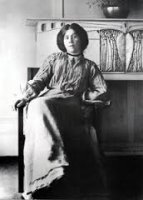 On one particular evening. the power of the Holy Spirit was said to have rested on a Miss Margaret Macdonald while she was in a state of illness at home. She was dangerously sick and thought she was dying. In spite of this (or perhaps because) she is supposed to have come under "power" of the spirit for several successive hours during which she experienced the manifestations of "mingled prophecy and vision." The message she received during this prophetic vision convinced her that Christ was going to appear in two stages at His second coming -- and not one! The emanation revealed that Christ would first come in glory to them that look for Him and again in a final stage when every eye would see Him. It was this visionary experience of Miss Macdonald which represents the prime source of the modern Rapture doctrine as the historical evidence compiled by Mr. MacPherson abundantly shows.
|
|
|
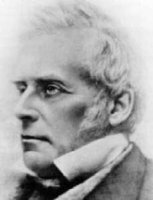 The Influence of John Darby
Many people have thought that John Darby, the founder of the Plymouth Brethren, was the originator of the Rapture doctrine. This is not the case. Darby was a brilliant theologian with outstanding scholarly abilities. Even those who have disagreed with his teachings admit that he, and many associated with him, helped to cause a revival in biblical learning throughout the evangelical world (which even has been perpetuated down to our own present day). All who love biblical research ought to be thankful for what Darby and especially his associates accomplished for biblical
scholarship. They particularly helped pave the way for the renewal of modern lexical studies of the languages of the Bible. The doctrine of "dispensationalism" was also a teaching they brought to the attention of the Protestant world.
It had long been thought by many Christians that the Rapture doctrine originated with ,John Darby. It is now known that this is not true. Darby only popularized it. Scofield and others who took over Darby's mantle later helped to make it respectable, Today, many of those in the evangelical sphere of Christianity are so certain of its veracity that it is accepted as the absolute truth of God. The fact is, however, John Darby received the knowledge of the doctrine from someone else. The source was the Margaret Macdonald mentioned above.
The studies of Mr. MacPherson show that her sickness during which she received her visions and revelations occurred sometime between February 1 and April 14, 1830. And by late spring and early summer of 1830, her belief in the two phases of Christ's coming was being mentioned in praise and prayer meetings in several towns of western Scotland. In these meetings some people were speaking in "tongues" and other charismatic occurrences were in evidence. These extraordinary and strange events in western Scotland so attracted John Darby that he made a trip to the area to witness himself what was going on. Though he did not approve of the ecstatic episodes that he witnessed. it is nonetheless significant that Darby, after returning from Scotland, began to teach that Christ's second coming would occur in two phases. MacPherson shows good evidence that Darby had even visited Miss Macdonald in her home. There can hardly he any doubt that the visions of Miss Macdonald are the source of the modern doctrine.
|
|
|
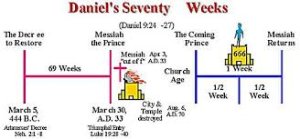 Visions and Dreams
While it is possible that visionary revelations can come from God, it is always prudent to be cautious in such matters. Near the same time that Miss Macdonald was receiving her visions, Joseph Smith in America was experiencing his apparitions which brought Mormon doctrines to the world.John Wilson also had his dreams which were the spark that started the false teaching of British realism. Not long afterwards Ellen G. White received her visions that resulted in many Seventh Day Adventist teachings. And remarkably, all these individuals received revelations of doctrines which were much at variance with one another. Such incidents bring to mind the warning that God gave to Moses.
"If there arise among you a prophet, or a dreamer of dreams, and giveth thee a sign or wonder, and the sign or the wonder come to pass, whereof he spoke unto thee, saying, let us go after other gods, which thou hast not known, and let us serve them; thou shalt not hearken unto the words of that prophet, or that dreamer of dreams: for the Lord proveth you, to know whether ye love the Lord your God with all your heart and with all your soul" (Deuteronomy 13: 1-3).
The teachings of visionaries also recall to mind what the apostle John tells
Christians.
"Beloved. believe not every spirit. but try the spirits whether they are of God: because many false prophets are gone out into the world" (I John 4:1).
And though some point to the prophecy of Daniel that "knowledge shall be increased" (Daniel 12:4) a proof that the revival of doctrinal truths will occur at the end of the age, this is not what Daniel meant. If one reads the prophet carefully. he will find that Daniel is speaking about the knowledge of his prophecies which will be increased. not the revival of general doctrines. In the original text of Daniel the definite article occurs before the word "knowledge." Daniel actually said "THE knowledge will be increased" and the text shows he means "the knowledge of his prophecies." Daniel is in no way speaking about renewing of doctrines at the time of the end. A further admonition is necessary concerning the origins of teachings which might happen near our own time. It is by the apostle Paul.
"Now the Spirit speaketh expressly, that in the latter times some shall depart from the faith, giving heed to seducing spirits, and doctrines of devils" (I Timothy 4:1 ).
These warnings from God's word are given as a reminder that we ought to exercise caution in accepting the truthfulness of visionary revelations especially those that happen near the end of the age and are contradictory to themselves or the Bible.
|
|
|
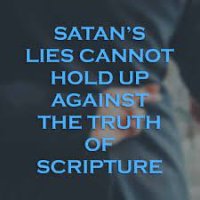 Conclusion
While there are many suspicious factors conferred with the origin of the Rapture, it could be admitted that the doctrine may reflect a teaching found in the Bible. At least, many feel so. John Darby no doubt thought there was something to it because after his trip to Scotland he changed his mind from believing in a single stage coming and adopted the two stage doctrine which became known as the Rapture. Darby was certainly not a visionary and his teachings whether right or wrong) are almost always based on scriptural revelation. It was Darby who popularized the Rapture with the scriptural arguments which seem so convincing to some. It could be that the teaching is basically true, but we at the Foundation for Biblical Research in Pasadena have felt incumbent to show our readers the unbiblical source of the doctrine. Too many people have for gotten that it was Miss Macdonald's visions which introduced the doctrine to the world.
Source: http://alt.messianic.narkive.com/Wazpnu2c/the-rapture-theory-it-s-surprising-origin
|
| NEXT WEEK: THE RAPTURE - SATANS PLAN OF DECEPTION WITHIN TODAYS CHURCH</i> |
|
 We will look at many verses promising Gods protection through the times of difficulty ahead.
|
| A NOTE FROM DAVID |
|
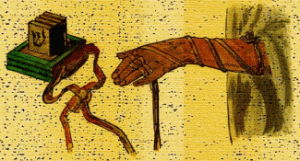 Rapture theory is a seducing doctrine, for it releases us both from commitment to a life of discipleship now, as well as release from the persecution ahead.
Unfortunately however, it is not Biblically based!
We need to prepare now for the challenging times ahead by living a life sold out to God!
PHYLACTERIES
Phylacteries (tephillin). These are strips of leather to which is attached little square box made of parchment and painted black. The box contains four parts of the Torah written on parchment: Exodus 13:1 and 11:6; Deuteronomy 6:4-9; 11:13-21. According to Deut 6:4-9 two phylacteries were used, one for the head and one for the arm. These (called frontlets in Deuteronomy) were put on in such a way that one box rested on the head, between the eyes (seat of the mind) and the other on the left arm opposite the heart (seat of the actions and the emotions, denoting that one loves the Lord with one's heart). They are referred to as phylacteries in the New Testament (Mat 23:5).
Source: http://www.bible-history.com
|
So until next week.......
MAY GOD BLESS YOU AND YOU BLESS GOD!
His servant and yours

Learn more about us at...
www.wwj.org.nz/about.php
|
A DAVID'S DOODLING
1315. A disciple walks the walk, not just talks the talk.
David Tait
|
Check
out the WWJ website for….
More David's Doodlings: www.wwj.org.nz/dd.php
Links to other sites of interest: http://www.wwj.org.nz/links.php
Till Death do us Part!: http://www.wwj.org.nz/tddup.php
Pets Rule!: http://www.wwj.org.nz/pets.php
The World's Greatest Groans: http://www.wwj.org.nz/groans.php
|










